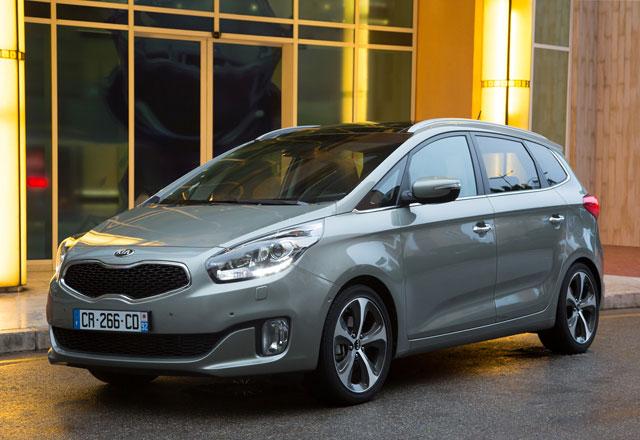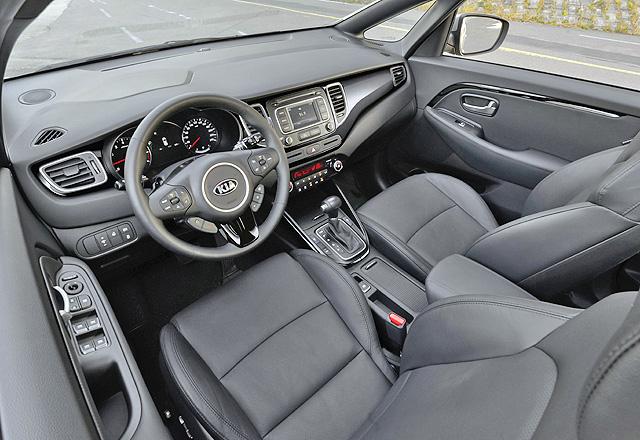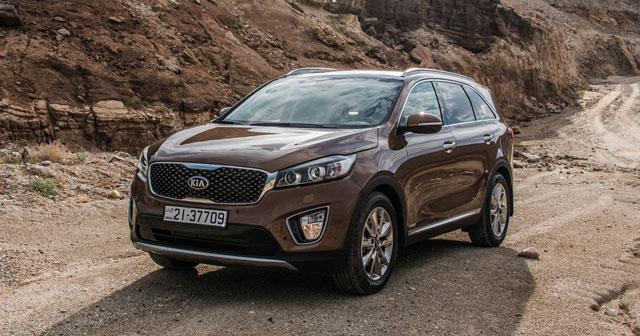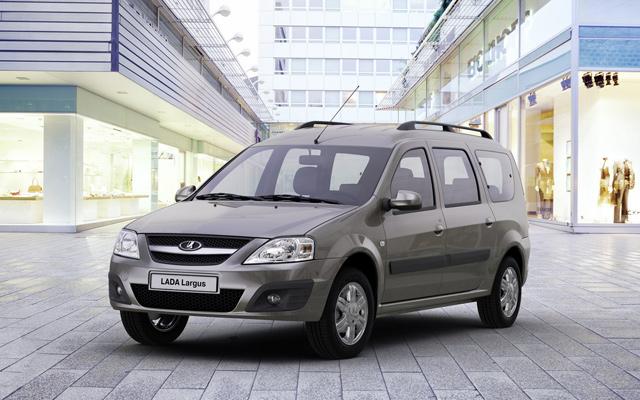You are here
Kia Carens 2.0 MPI (auto): Compact and convenient
By Ghaith Madadha - Dec 26,2016 - Last updated at Dec 26,2016

Photo courtesy of Kia
A handsome, practical and compact car-like multi-purpose vehicle (MPV) of the sort that one would expect to be far more popular in a market like Jordan, the Kia Carens is natural to the Ford C-Max, whose popularity has recently started rising. With modest engine displacement, manoeuvrability and optional seven-seat capacity, the Carens is more sensible for larger families than saloon cars overloaded with more than the legal five passenger capacity, more affordable and often more spacious than 7-seat SUVs.
Sensibly stylish
First launched in 2013, the third generation Kia Carens has a distinctly European styling sensibility, with wraparound headlights, charismatic grille and flowing A-pillar transition from bonnet to roofline. A difficult class of car to design with a sense of flair and styling flourish, the compact MPV is intended to maximise interior space within a relatively small frame, and with a tall roof. Nonetheless, the Carens pulls it off quite well, with its design sensibility seemingly more like a large hatchback than a bulky mini-van of the past.
Logical and practical in design and packaging, with thoroughly contemporary look, the Carens features sharp lines, bulging bonnet, tailgate spoiler and muscular surfacing along the flank to detract from its height. Instilled with a certain sense of momentum and tension, its high set rear lights and lower black bumper section lend it a pert appearance, while large 17-inch and optional 18-inch alloy wheels are well-proportioned to its dimensions. Meanwhile, a mildly face-lifted mid-lifecycle version is expected to arrive to the region during 2017, with slightly restyled bumpers and lights.
Refined delivery
Powered by a choice of 1.6- and 2-litre engines, the Carens 2.0 MPI driven features more conventional multi-point fuel injection rather than gasoline direct injection as models denoted as GDI. Mounted transversely and driving the front wheels through a six-speed automatic gearbox, the Carens 2.0 MPI develops 150BHP at 6,500rpm and 143lb/ft torque at 4,800rpm. Smooth, eager and progressive in delivery, Carens 2.0 MPI accelerates through the 0-100km/h benchmark in 11.2 seconds and can attain 194km/h, and return 7.8l/100km fuel efficiency and 184g/km CO2 emissions, on the combined cycle.
Progressive and relatively high revving in delivery, the 2.0 MPI engine nevertheless delivers decent low-end and mid-range flexibility. Weighing in at 1,464kg in 7-seat guise, the Carens progress is timely and quick enough to easily blend in with faster moving traffic, and overtake or drive up inclines with confidence. Well-insulated from noise, vibration and harshness, the Carens engine rarely disturbs cabin refinement, unless pushed hard and to the edge of its rev limit. Meanwhile, gearshifts are fired off in a smooth and concise fashion, with emphasis on the former.
Manoeuvrable and reassuring
Manoeuvrable and agile for a 7-seat vehicle, its relatively compact size, comparatively narrow dimensions and agility make it easy to drive to drive in congested, snaking and crowded city environments. Accomplished and nimble in town, the Carens also proved to be a confident and stable highway cruiser. Driven at European highway speeds of around 130km/h, the Carens remained reassuringly sure-footed through gushing rain and little susceptible to strong winds, despite its tall design. It also felt settled over extension joints and sudden dips and crests.
Given its height and size, the Carens also availed itself well through winding country lanes and hill climbs. Tide and positive into corners, its front wheels grip well while body lean is evident but well-controlled, while steering was quick and direct, if not exactly superlative with feel and feedback. Balance, predictable and with good roadholding owing to a long wheelbase and grippy 225/45R17 tyres, the Carens is easy to guide through narrow switchbacks, and benefits from good road visibility, including small front side windows to improve visibility despite thick and rakishly slanted A-pillars.
Versatile and practical
Offered with 2- or 3-row seating for 5- or 7 passengers, the cabin is particularly generous in front and middle rows, with terrific head and shoulder and truly excellent headroom surpassing many executive and some full-size luxury cars. Well sized and wide-swinging conventional doors allow easy cabin access including the third row, but sliding rear doors would have provided yet easier access in tight spots. The Carens’ smaller third row seats can fold flat for convenience while middle row seats recline and slide, to allow one to manage space availability. With middle and rear rows folded down, the Carens provides almost van-like cargo volume.
Thoroughly improved and more up-market in design, finish, materials and equipment that its predecessor, the current cabin is well-finished, with clear instruments, ergonomic layouts and plenty of strategically placed soft texture plastics. Well-kitted, top spec EX version features LED daytime and rear lights, Xenon headlamps indicator lights in the side mirrors, rear side window blinds, 10-way adjustable driver’s seat, leather upholstery child monitoring mirror. Meanwhile, front parking sensors and rear view camera make manoeuvring easier, while additional equipment includes heated middle row seats, rain-sensing wipers, cooled glove box and panoramic sunroof.
TECHNICAL SPECIFICATIONS
Engine: 2-litre, transverse 4 cylinders
Bore x stroke: 81 x 97mm
Compression ratio: 10.3:1
Valve-train: 16-valve, DOHC
Gearbox: 6-speed automatic, front-wheel drive
Gear ratios: 1st 4.212:1; 2nd 2.637:1; 3rd 1.8:1; 4th 1.386:1; 5th 1.0; 6th 0.772:1
Reverse/final drive: 3.385:1/3.51:1
Power, BHP (PS) [kW]: 150 (152) [112] @ 6,500rpm
Power-to-weight: 135.1BHP/tonne
Torque, lb/ft (Nm): 143 (194) @ 4,800rpm
Torque-to-weight: 161.5Nm/tonne
0-100km/h: 11.2 seconds
Top speed: 194km/h
Fuel consumption, combined: 7.8 litres/100km
CO2 emissions, combined: 184g/km
Fuel capacity: 58 litres
Length: 4,525mm
Width: 1,805mm
Height: 1,610mm
Wheelbase: 2,750mm
Track, F/R: 1,563/1,576
Overhang, F/R: 940/835mm
Ground clearance: 151mm
Aerodynamic drag co-efficiency: 0.30
Headroom, 1st/2nd/3rd row: 1035/1002/867mm
Legroom, 1st/2nd/3rd row: 1034/940/707mm
Shoulder-room, 1st/2nd/3rd row: 1,438/1,440/1,313mm
Luggage volume, behind 3rd/2nd/1st row: 103-/492-/1667 litres
Kerb weight: 1,464kg
Steering: Electric-assisted rack & pinion
Lock-to-lock: 2.7 turns
Turning Circle: 11 metres
Suspension, F/R: MacPherson struts, anti-roll bar/torsion beam, coil springs
Brakes, F/R: 300 x 28mm ventilated discs/284 x 10mm discs
Tyres: 225/45R17
Related Articles
Launched last year, the third generation Kia Carens is a compact- to mid-size multi-purpose vehicle (MPV) with a more stylish European-influenced design. In addition to sharper lines and aesthetics, the new Carens’ form is more similar to an overgrown hatchback than a saloon-based MPV or re-modded van.
With accelerated model development and update cycles, Kia is becoming ever more responsive to customer requirements and changing trends, and has blurring the lines between a mid-life facelift and an all-new model. Though longer than the car it replaces, the 2015 Kia Sorento at first seems like an update.
A newcomer to the local market since Lada’s Jordanian comeback late last year, the Lada Largus Universal is practical, affordable, manoeuvra



















